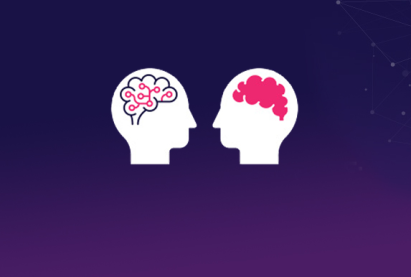Find out about The Open University's Open degree.
The Quest For AI (And Why We’re Not There Yet)
The concept of thinking machines dates back to antiquity. Renaissance craftsmen built complex automatons to try to simulate intelligent behaviour. However, the possibility of genuine Artificial Intelligence (AI) had to wait until the arrival of programmable computers in the twentieth century. Since then there have been several failed attempts. That was until the advent of modern “Deep Learning” algorithms, which can finally mimic some aspects of human intelligence. However, even the best modern AI is nothing like the “general” intelligence that humans possess. It is more like a hugely complicated descendent of those early automatons.
So How Does Modern AI Work?
Modern AI systems mimic the connectivity of the human brain. They combine the results of millions of simple computations in a specific way to react appropriately to given inputs. By showing them thousands or millions of inputs that have known desired outputs they can learn how to predict the desired outcome for a similar but unseen input. Some AI systems might seem like magic, but they only work if they have millions of labelled inputs to learn from. Compare this with humans who get the idea after just a handful of examples.
Using AI for Science
AIs are useful for science research because they can perform mundane tasks rapidly and reliably. They never get tired or bored. However, they cannot replace scientists’ experience and intuition. AIs can help to “discover” relationships between different observed quantities in statistical sense, but humans are still needed to interpret those results appropriately. Once it has been properly trained, a specific AI can perform a specific task with superhuman speed and sometimes with superhuman accuracy. Unfortunately, the same AI can often fail miserably when presented with a similar, but not quite identical, task. In contrast, human beings extrapolate easily from previous experience, which can be invaluable in scientific contexts where finding millions of examples is very challenging. The fact that most AIs are trained to perform very specific tasks also means that human scientists and citizen scientists are much more likely to spot strange or unexpected phenomena in data and make serendipitous discoveries.
Artificial Vision
One very common use of AI in science is for complex image analysis. Most AIs that perform image analysis are called “Convolutional Neural Networks” (CNN). A CNN is a special type of neural network that is based on simple models of how human vision works. A CNN learns an ensemble of simple pattern detectors called filters and then works out how to stitch these simple patterns together into complicated shapes. Finally, it learns which of these shapes are likely to indicate a particular type of object like a dog, a cat or a galaxy. In the human visual system, a lot of this processing probably happens in the retina and optic nerve, before the signals even get to the brain! CNN-based image processing has been used to help find huge radio structures produced by supermassive black holes in distant galaxies, and similar techniques could be used to process data from a next-generation radio telescope – the Square Kilometre Array.
Training AIs for the Scientific Data Deluge
In the coming decade, next-generation facilities like CTA, SKA and the Rubin Observatory will generate vast datasets that will be impossible for humans to manually filter and analyse.
We would like to train AIs to help us process these data, but the nature of scientific research means that the objects and phenomena being studied are often rare, with only a handful of confirmed examples available for training. Fortunately, all is not lost! In recent years, researchers have found ways to train AIs, even when very few training data are available.
One option for helping machines to learn is to let humans teach them. Citizen science experiments enable large crowds of human volunteers to combine their collective intelligence and perform complicated analyses of large datasets. As a welcome side effect, the citizen scientists provide labels for thousands of data that can be used as training examples for AI systems. The data from citizen science projects like Galaxy Zoo: Clump Scout are being used to train Deep Learning algorithms that mimic the responses of citizen scientists.
In some cases, AI systems can teach themselves by competing against each other. This “adversarial learning” approach helped the AlphaGo AI system to beat the best human Go player in the World (Lee Sedol). AlphaGo played thousands of games of Go against a twin of itself until it had learned the best ways to win. Adversarial learning can be applied in certain situations when training data are scarce, but a general goal for the algorithm can be defined. It has been used in scientific contexts to intelligently enhance the resolution of astrophysical images or mimic the effect of physical processes to artificially make galaxies look older or younger.



Rate and Review
Rate this video
Review this video
Log into OpenLearn to leave reviews and join in the conversation.
Video reviews